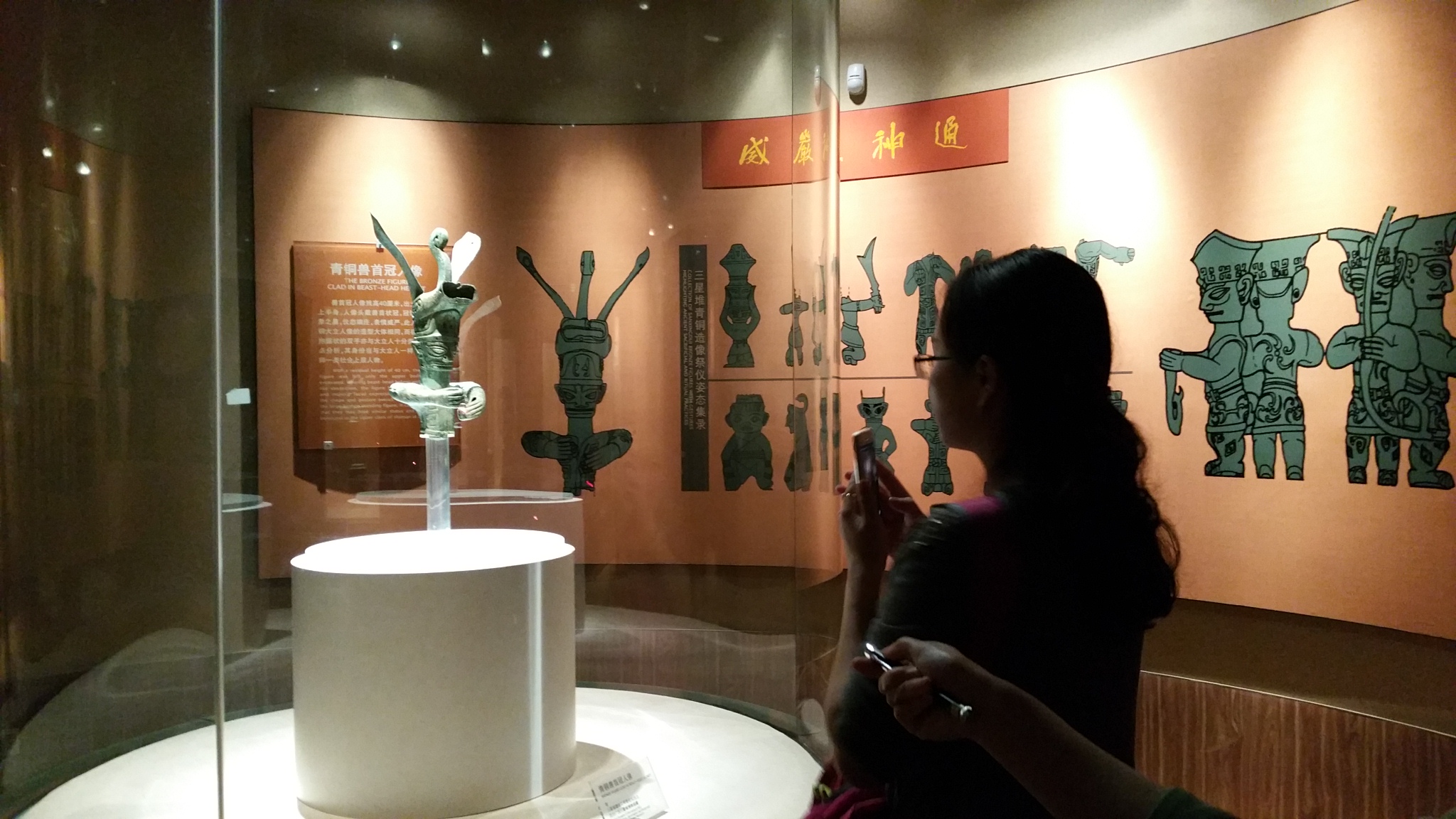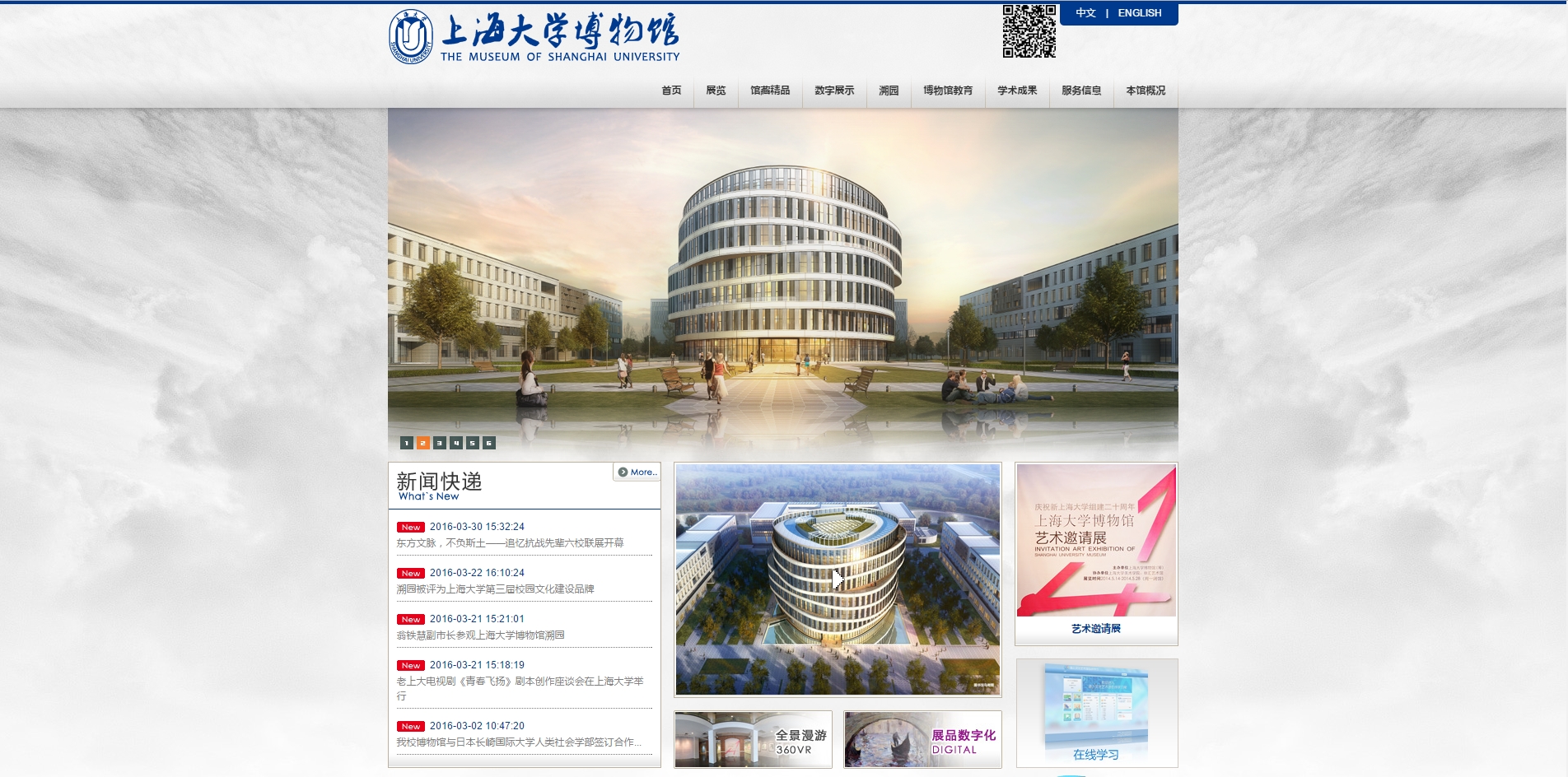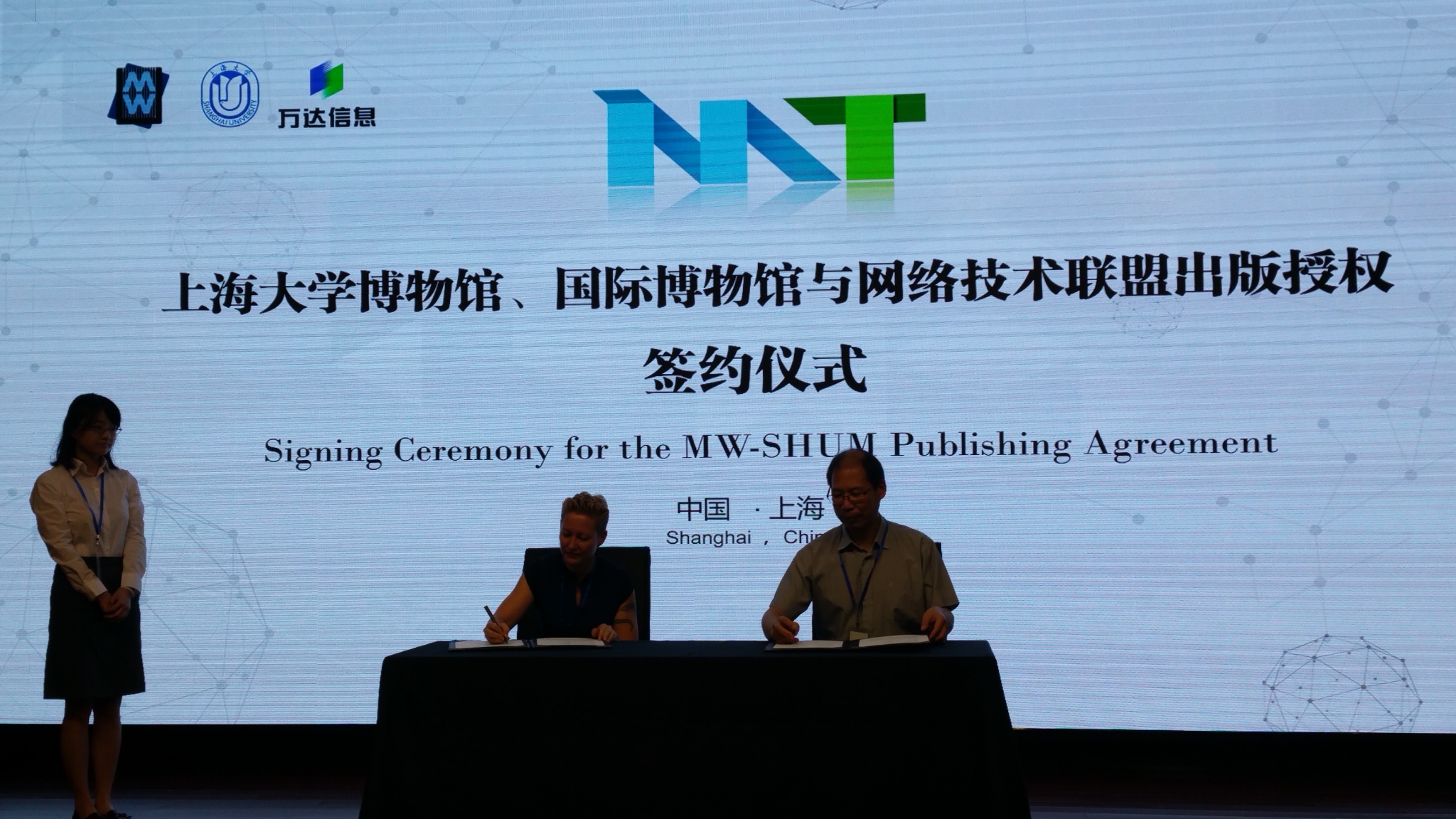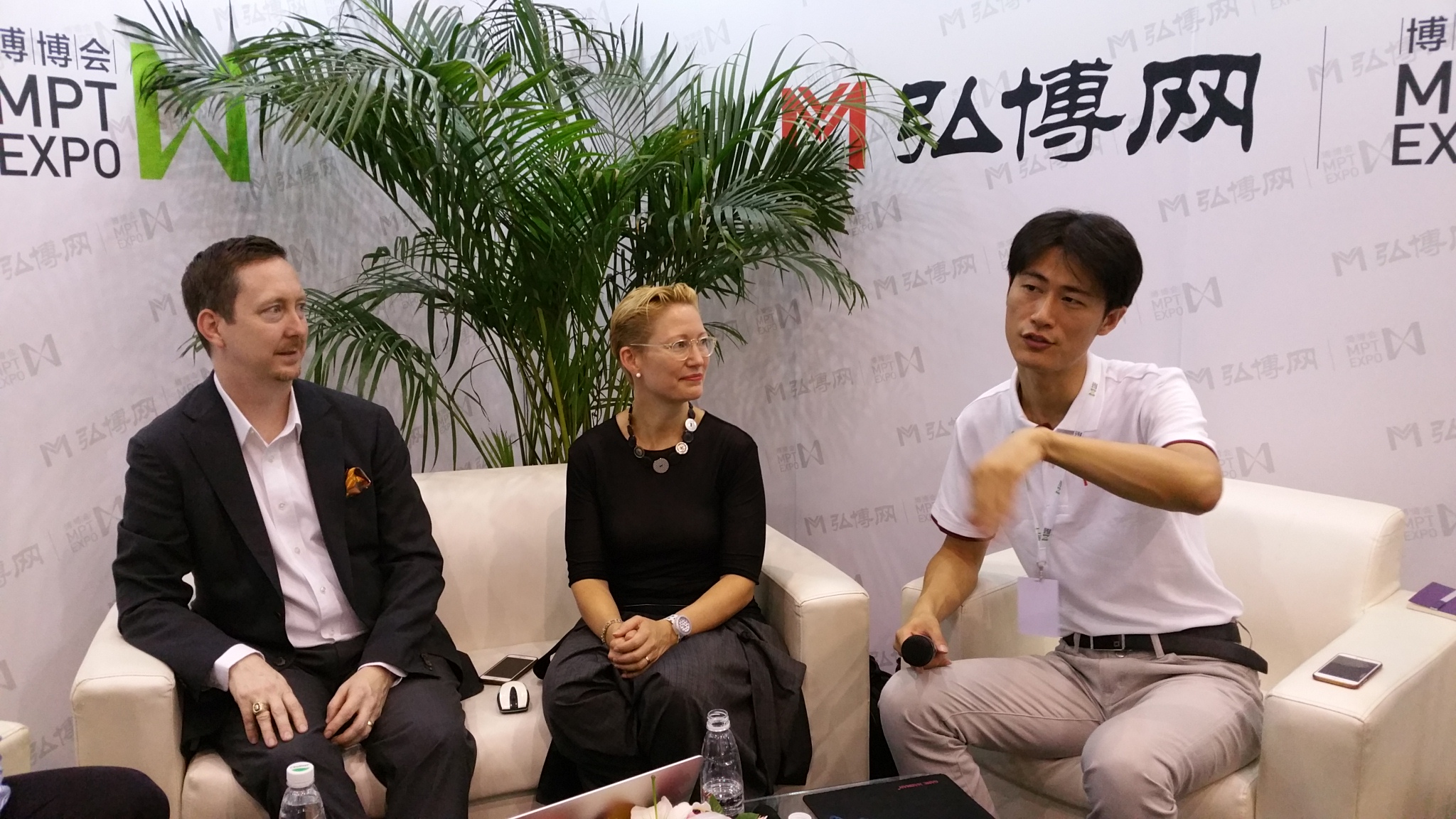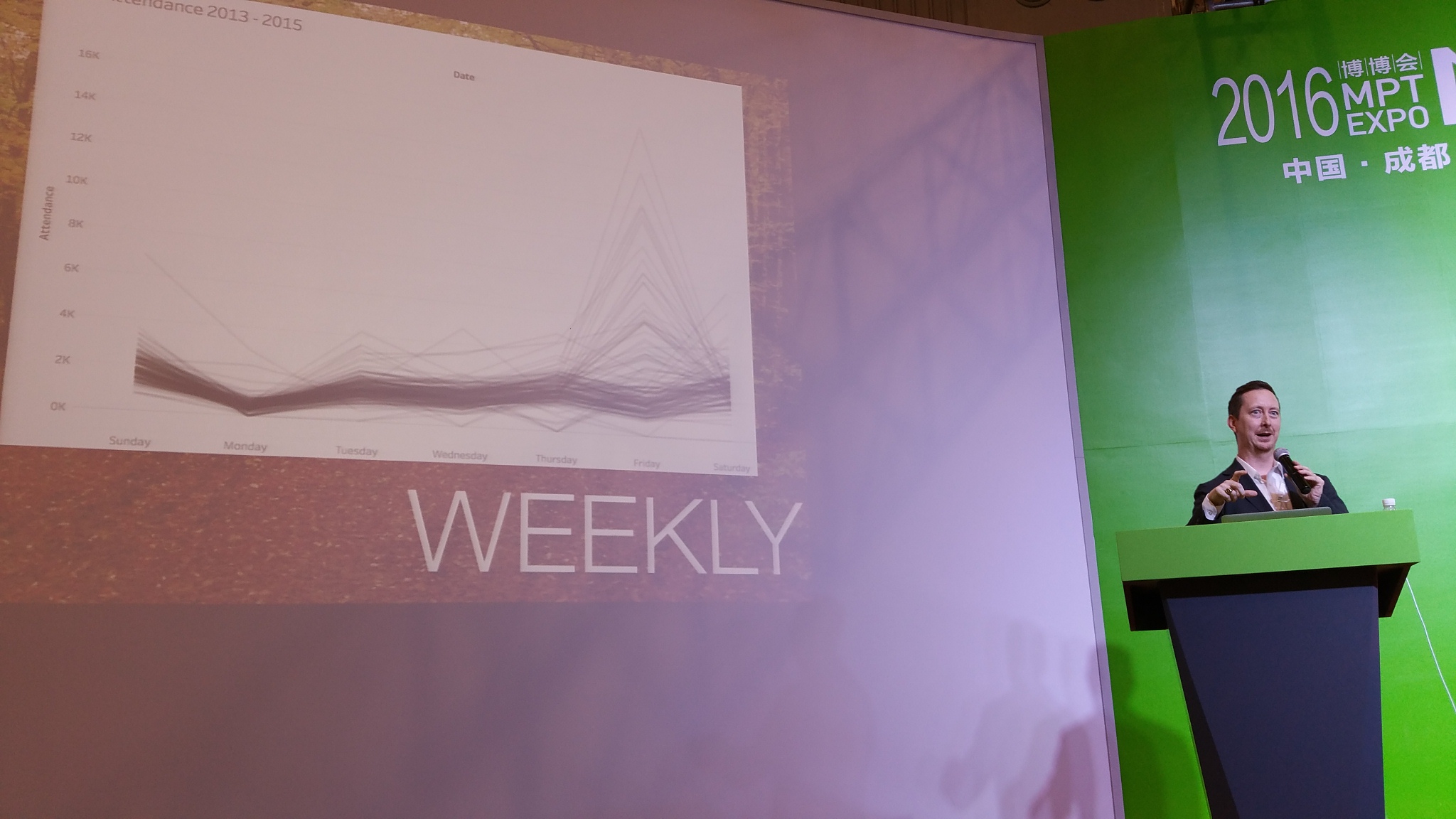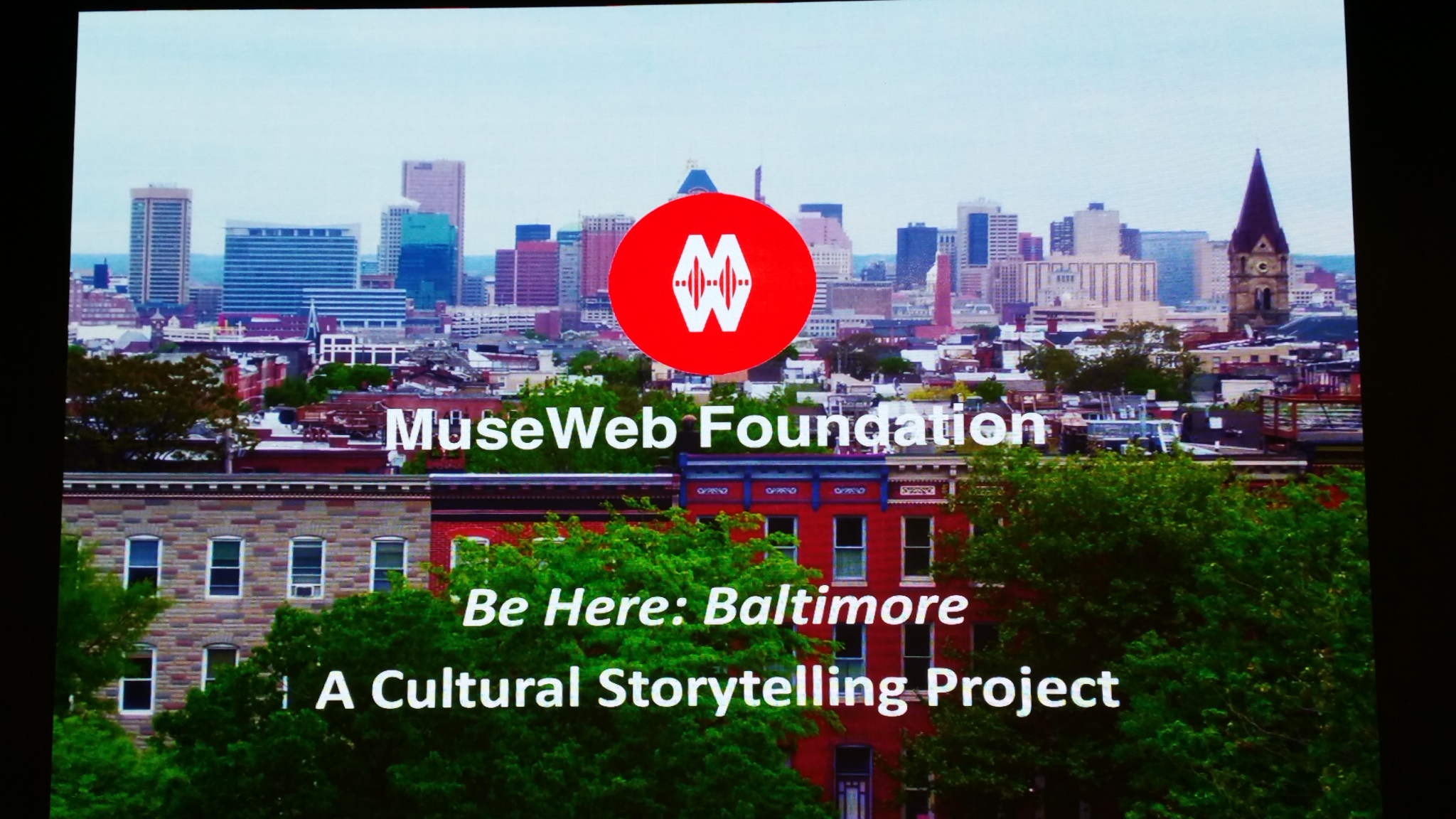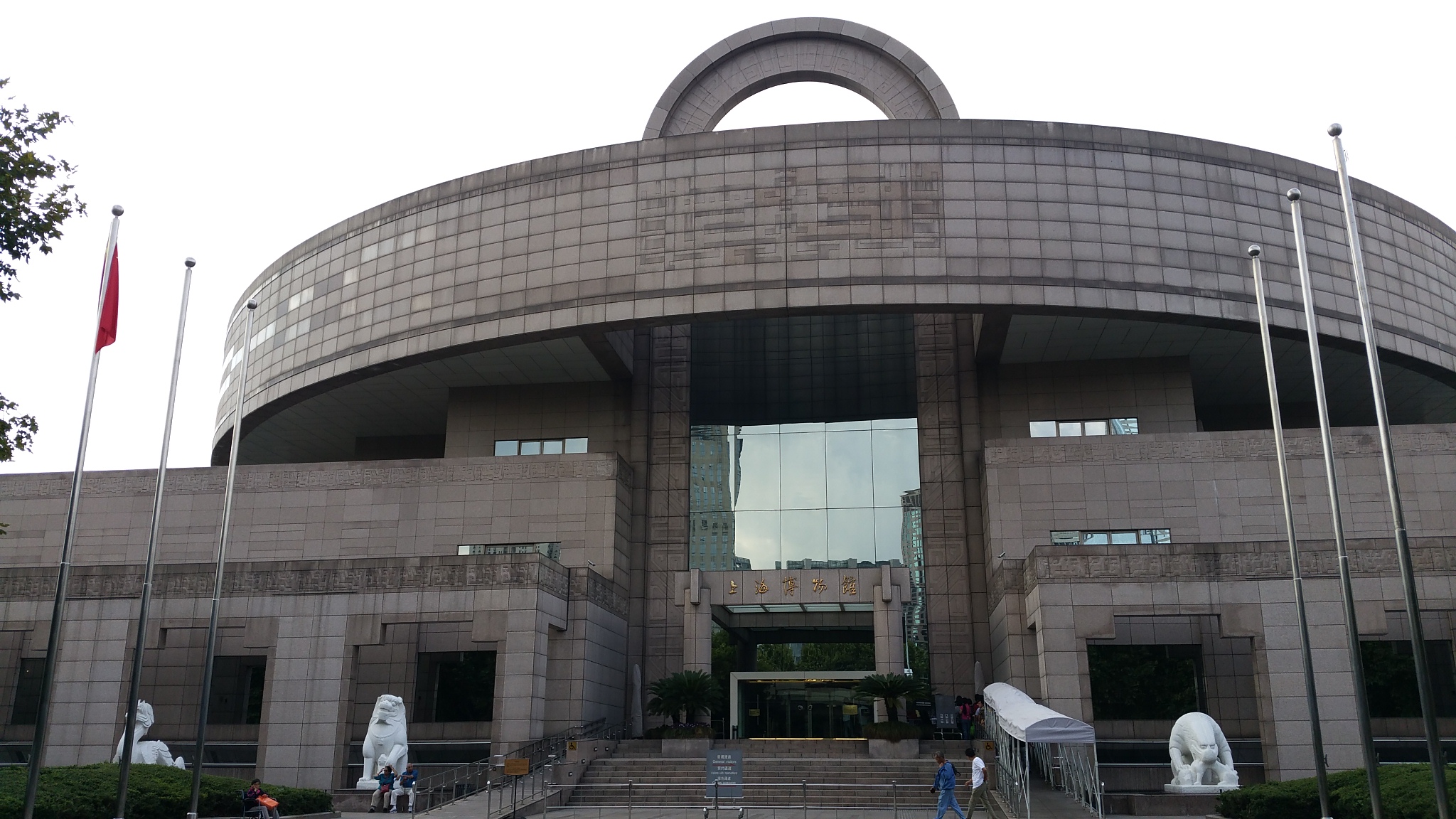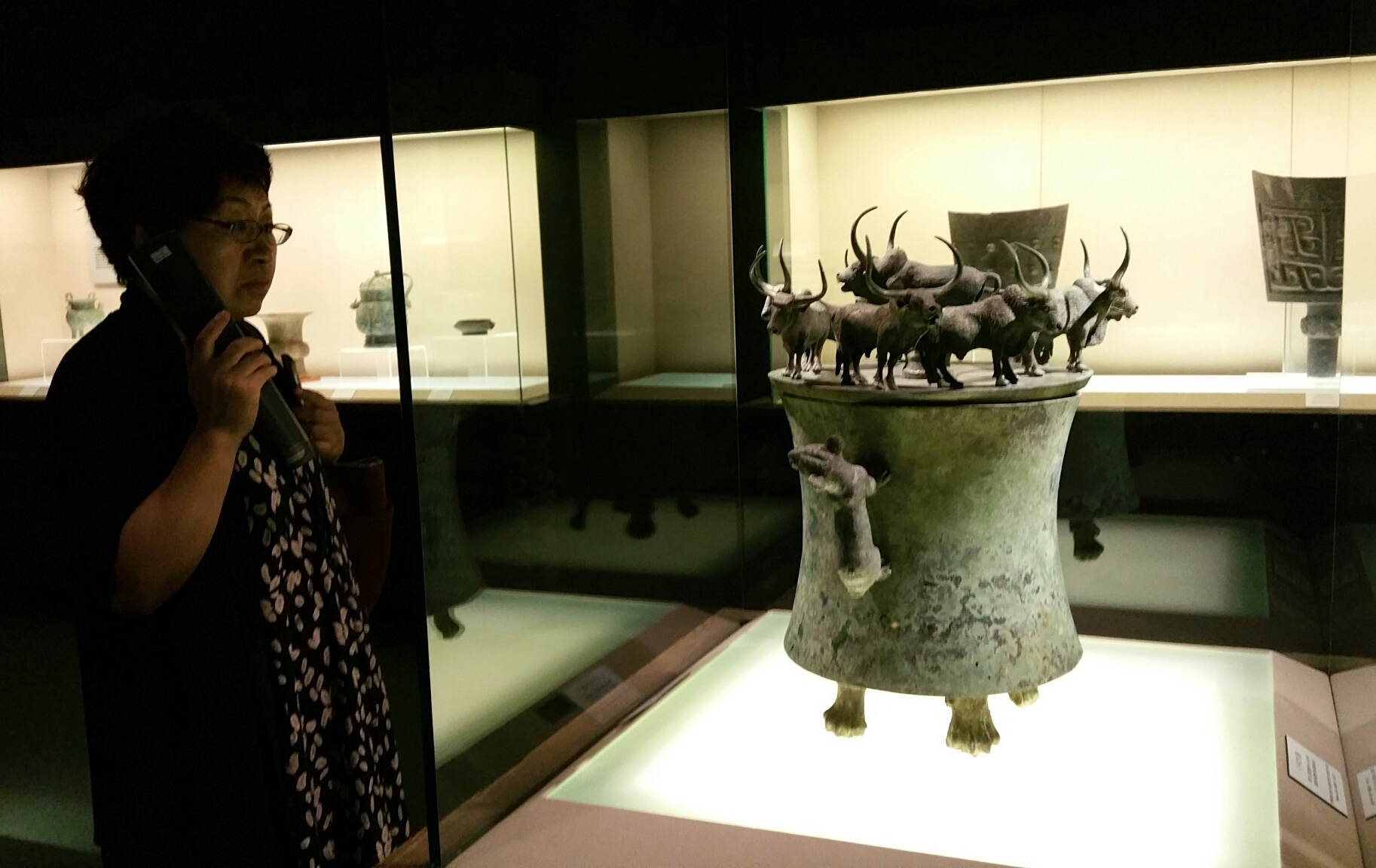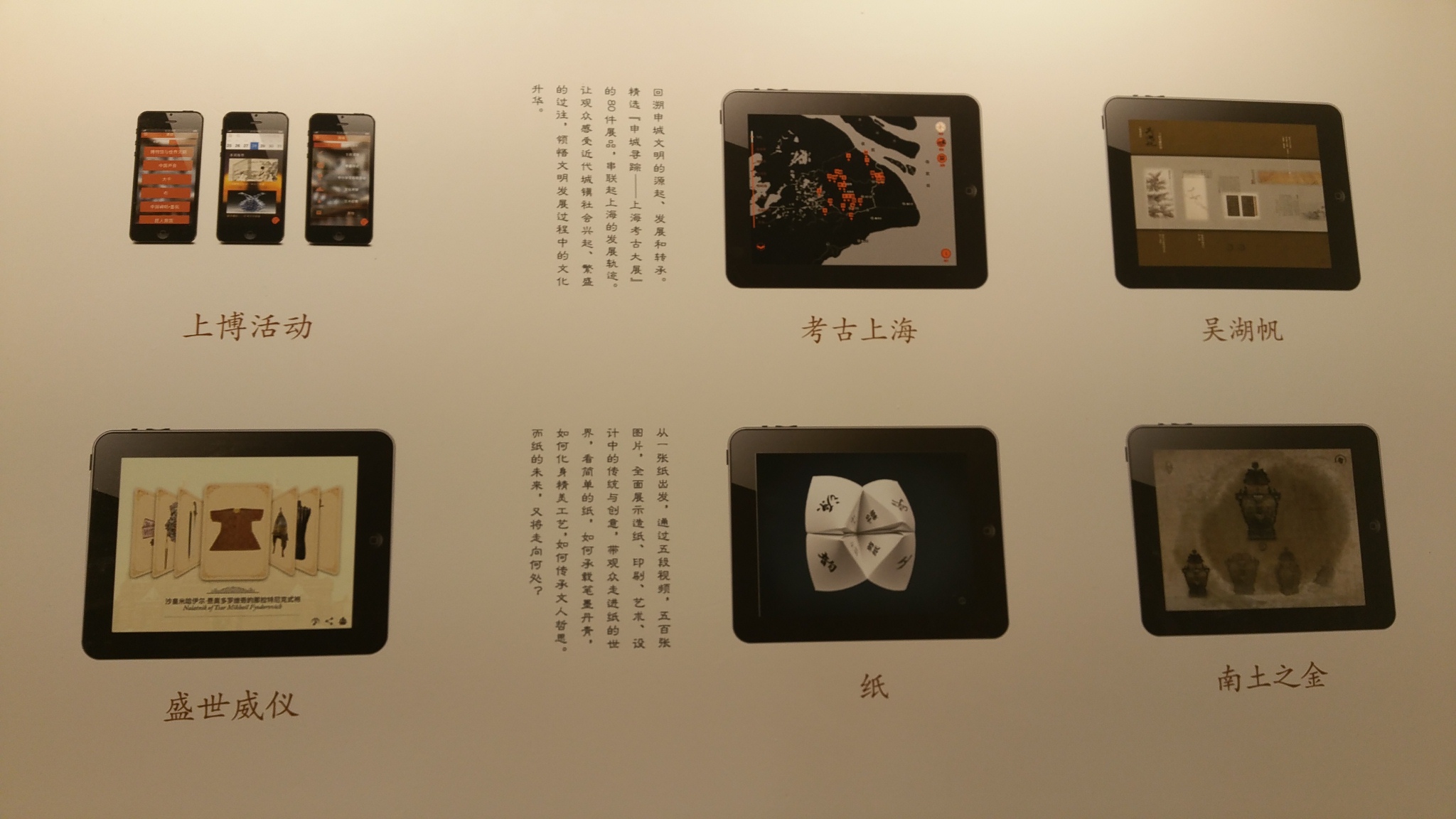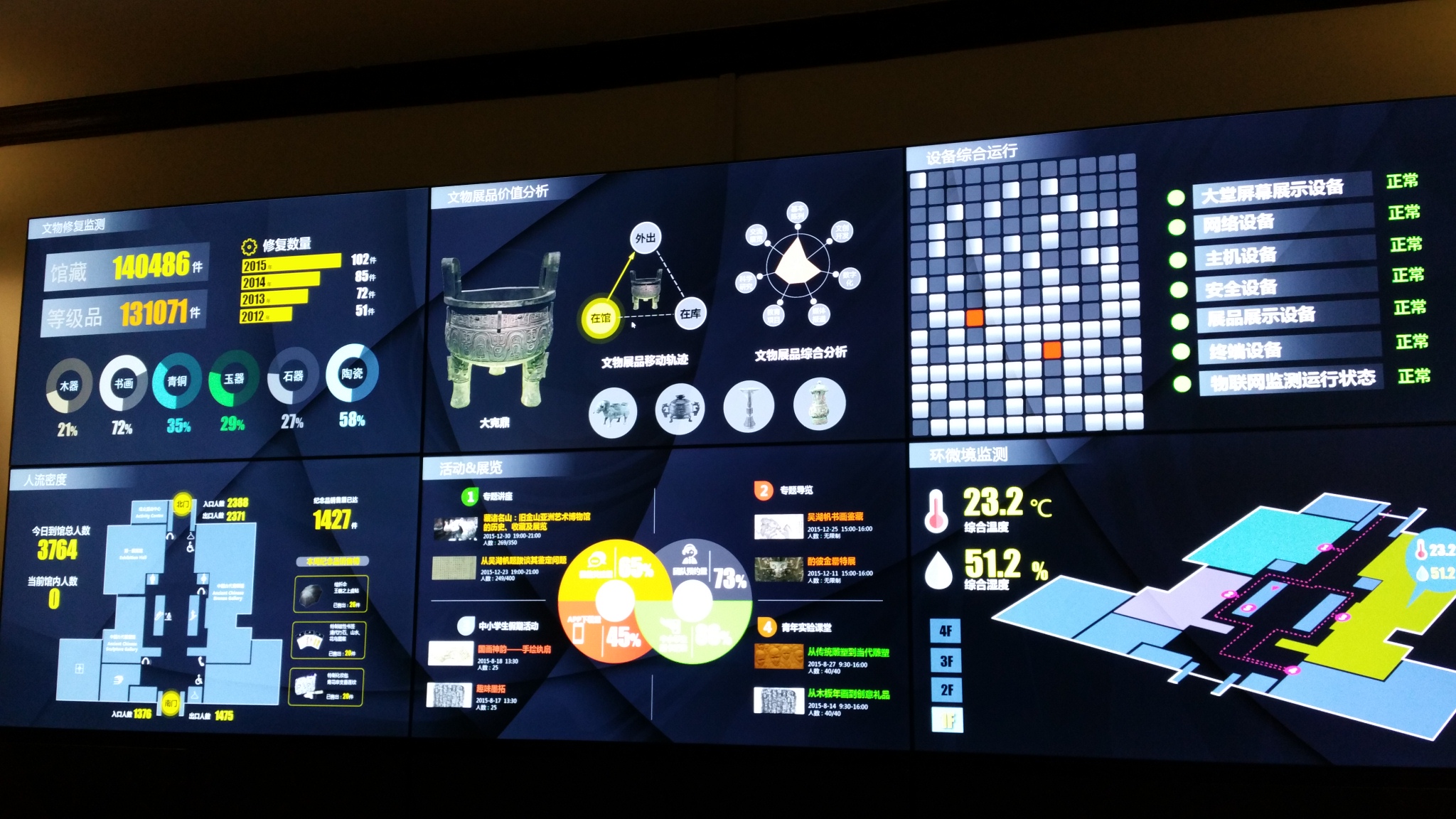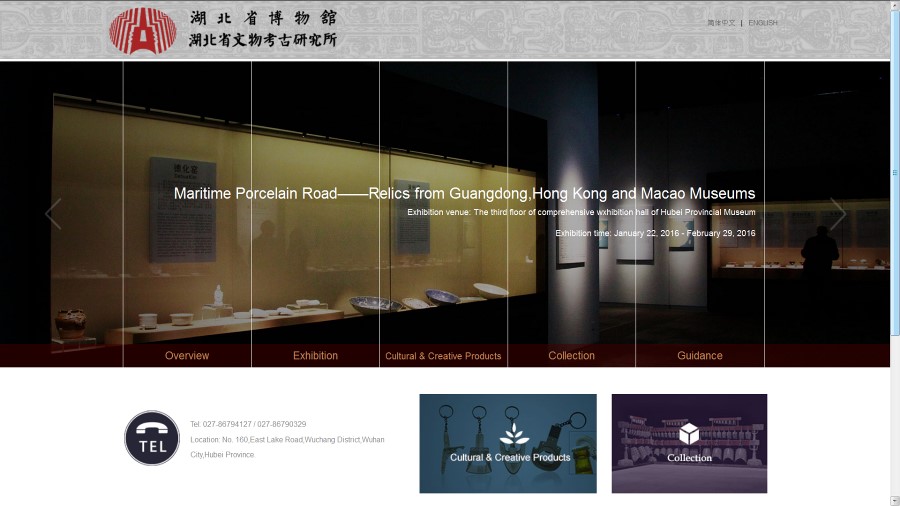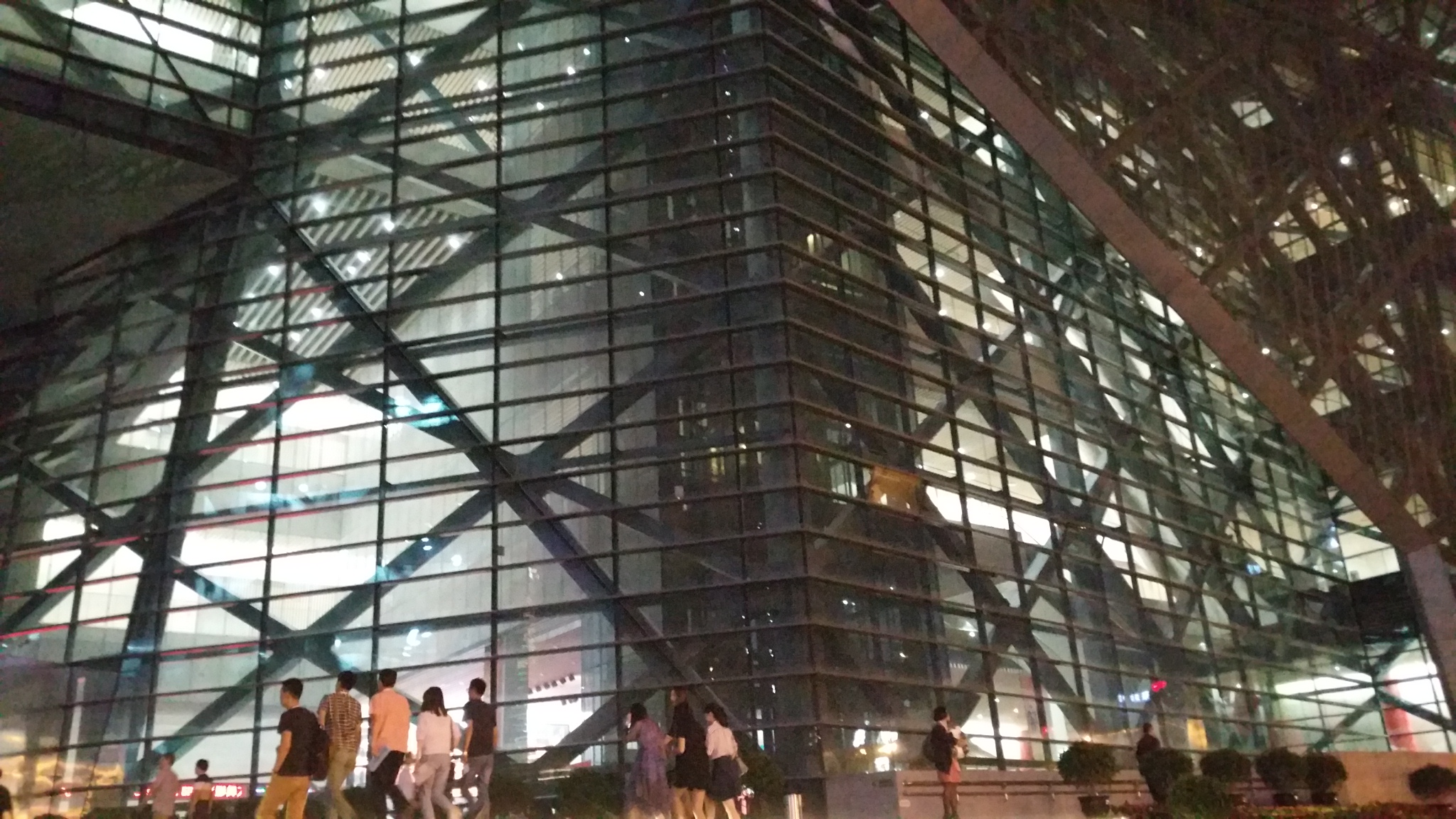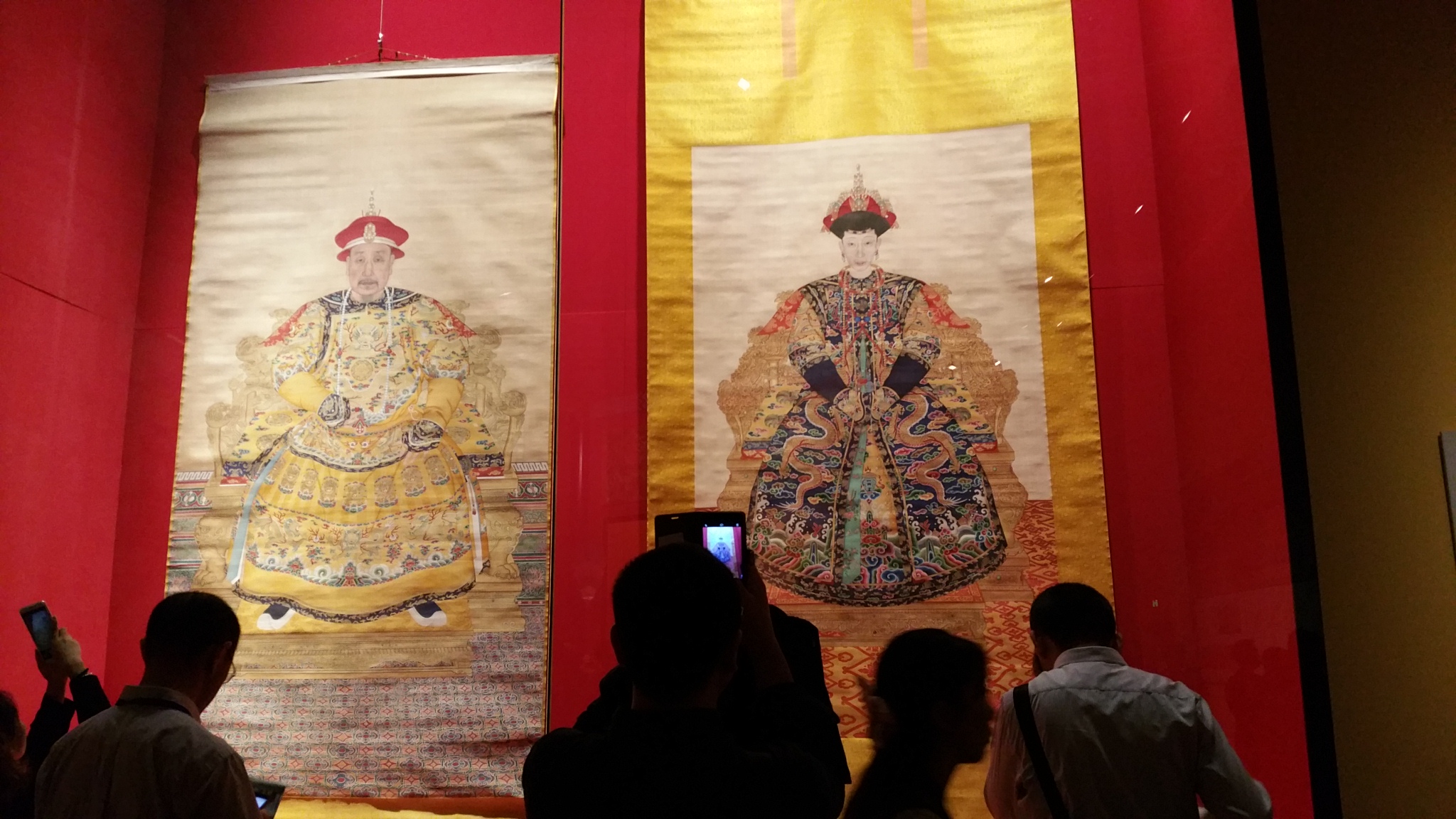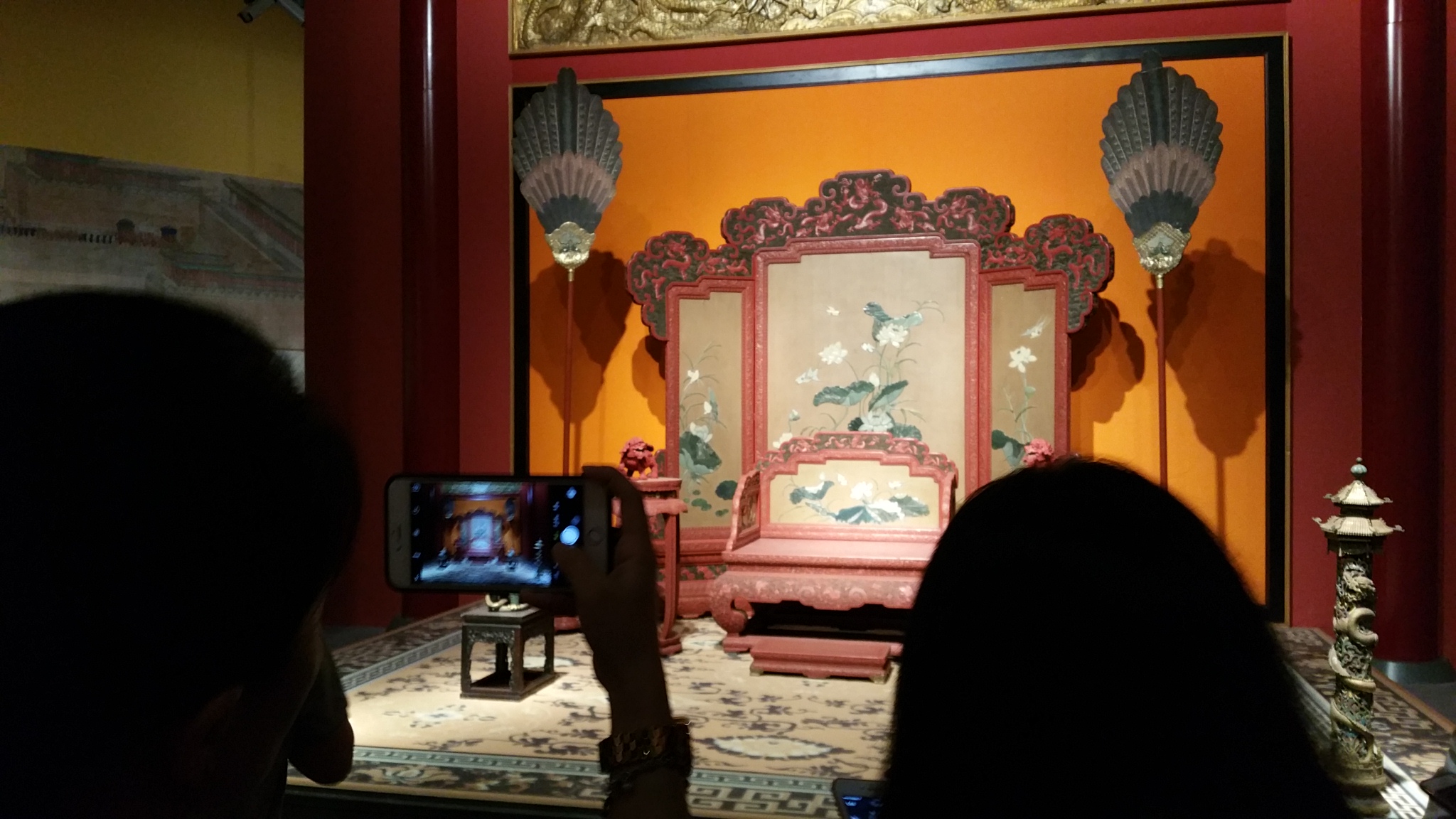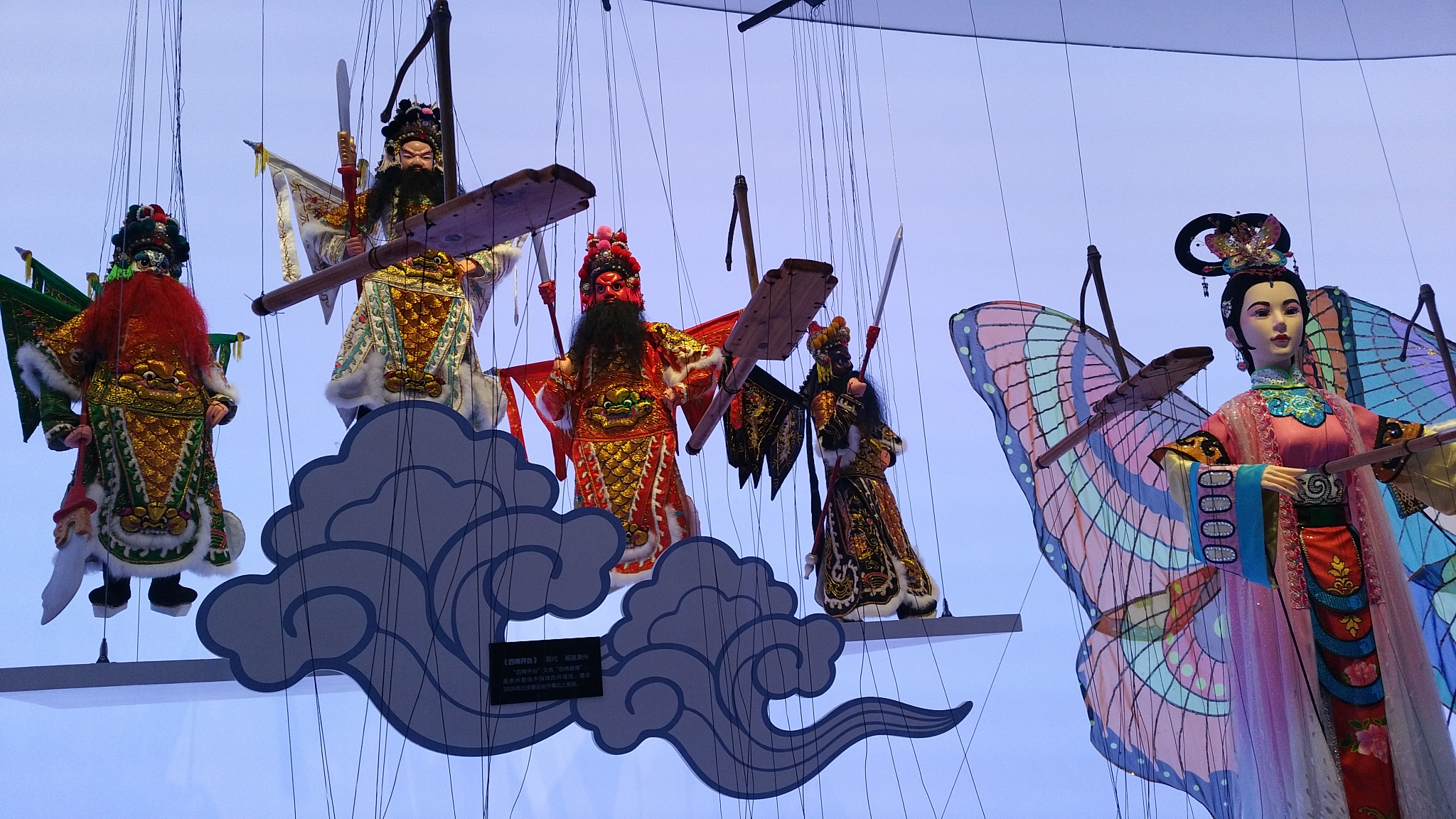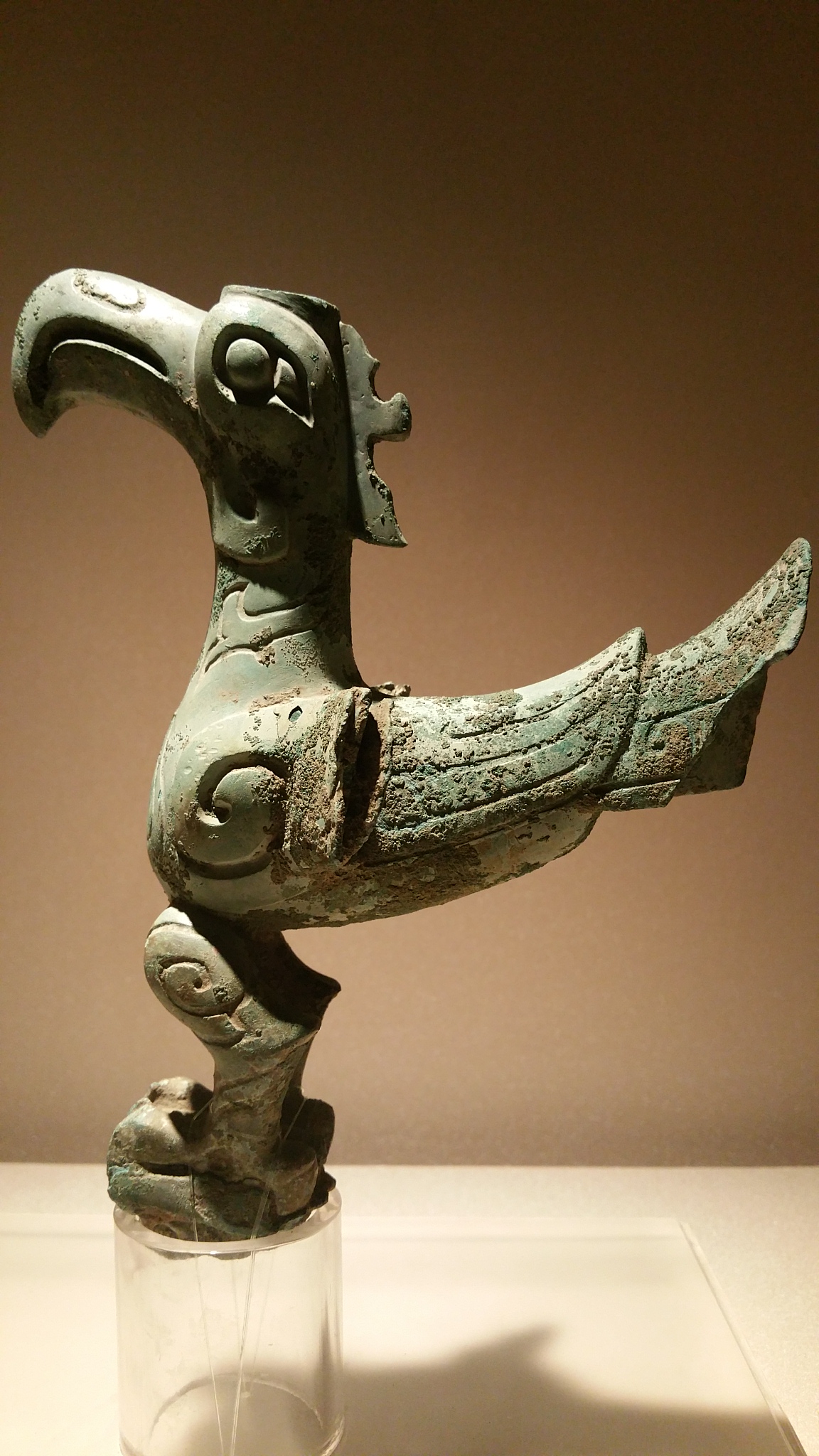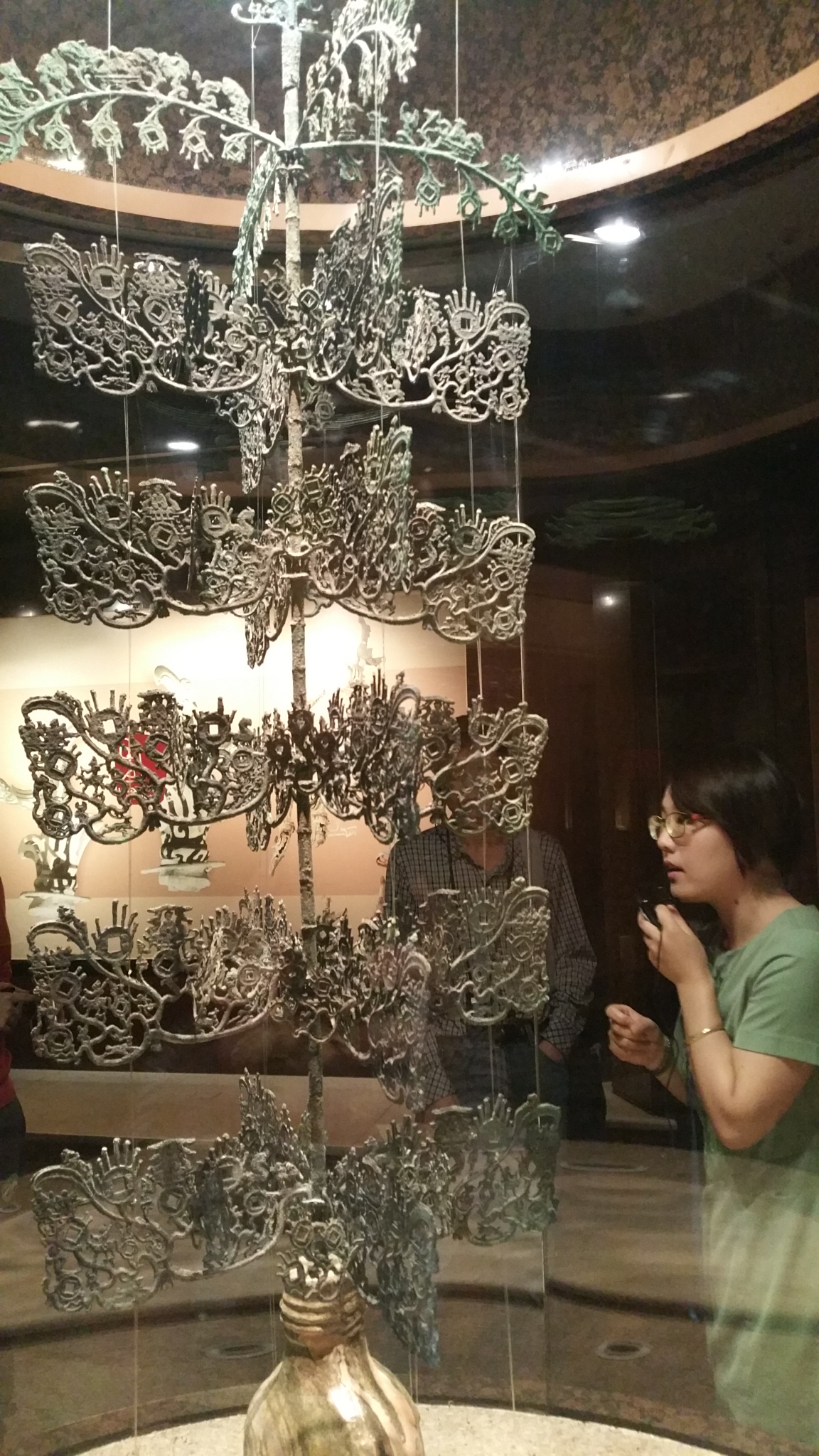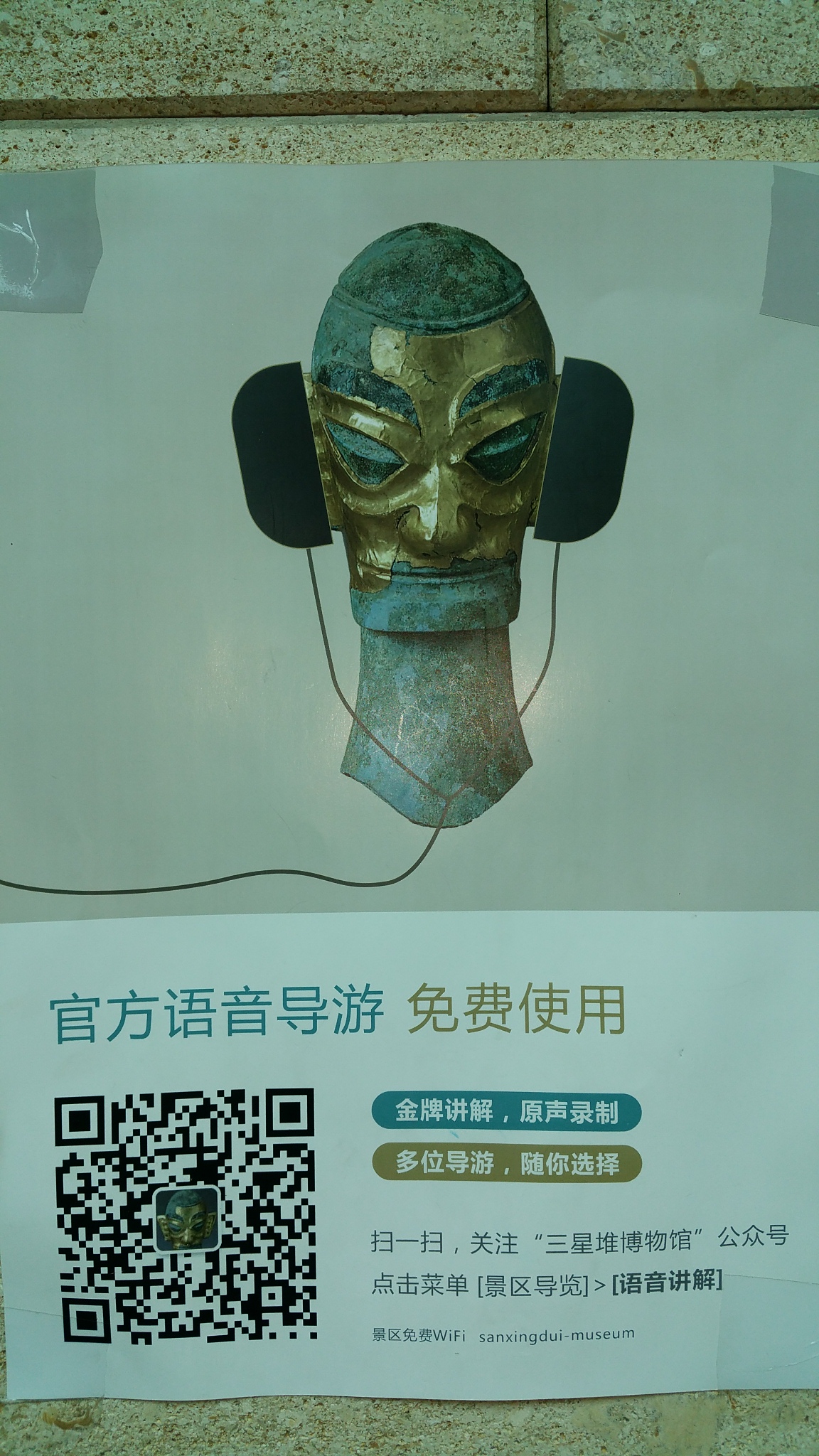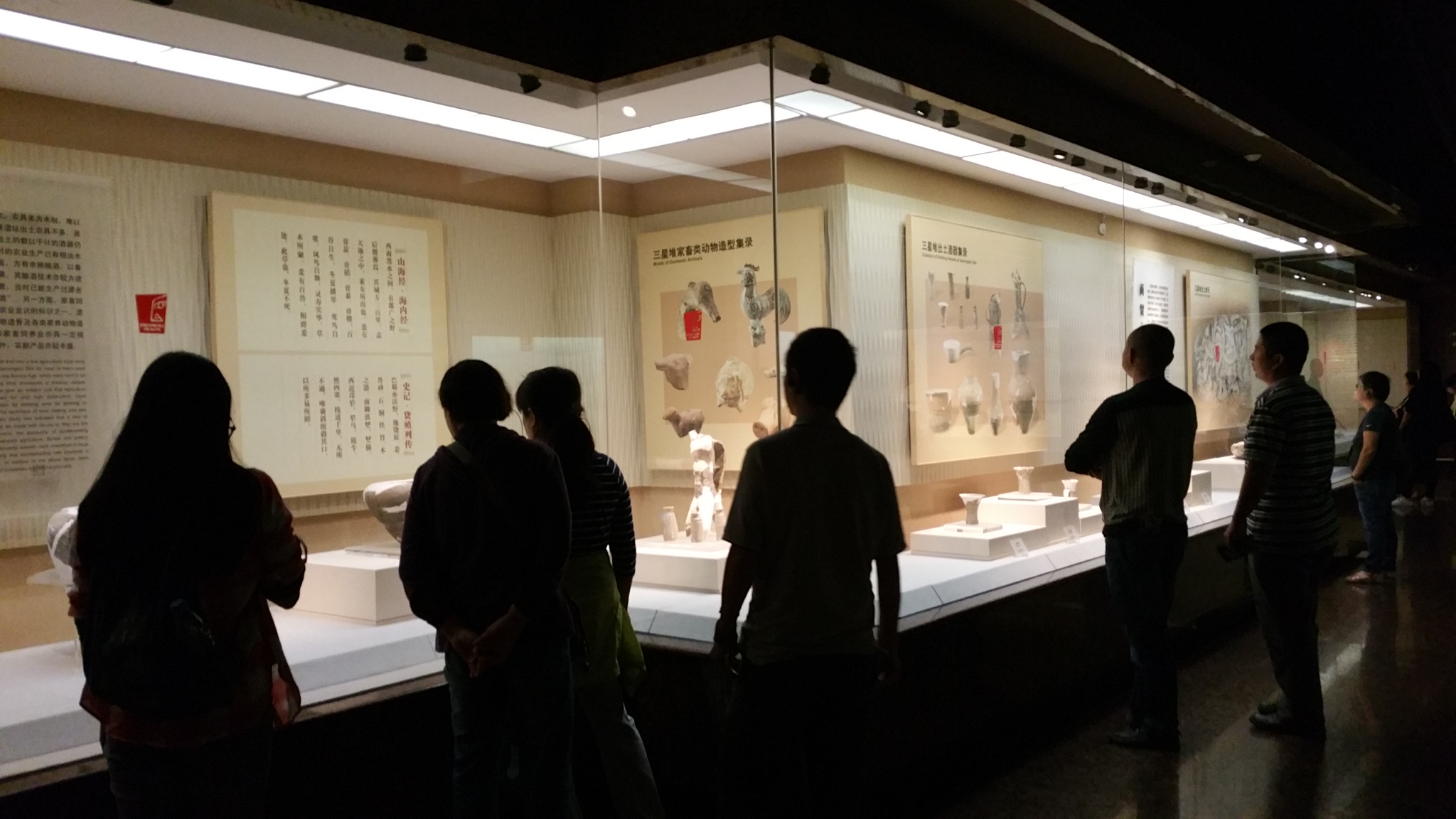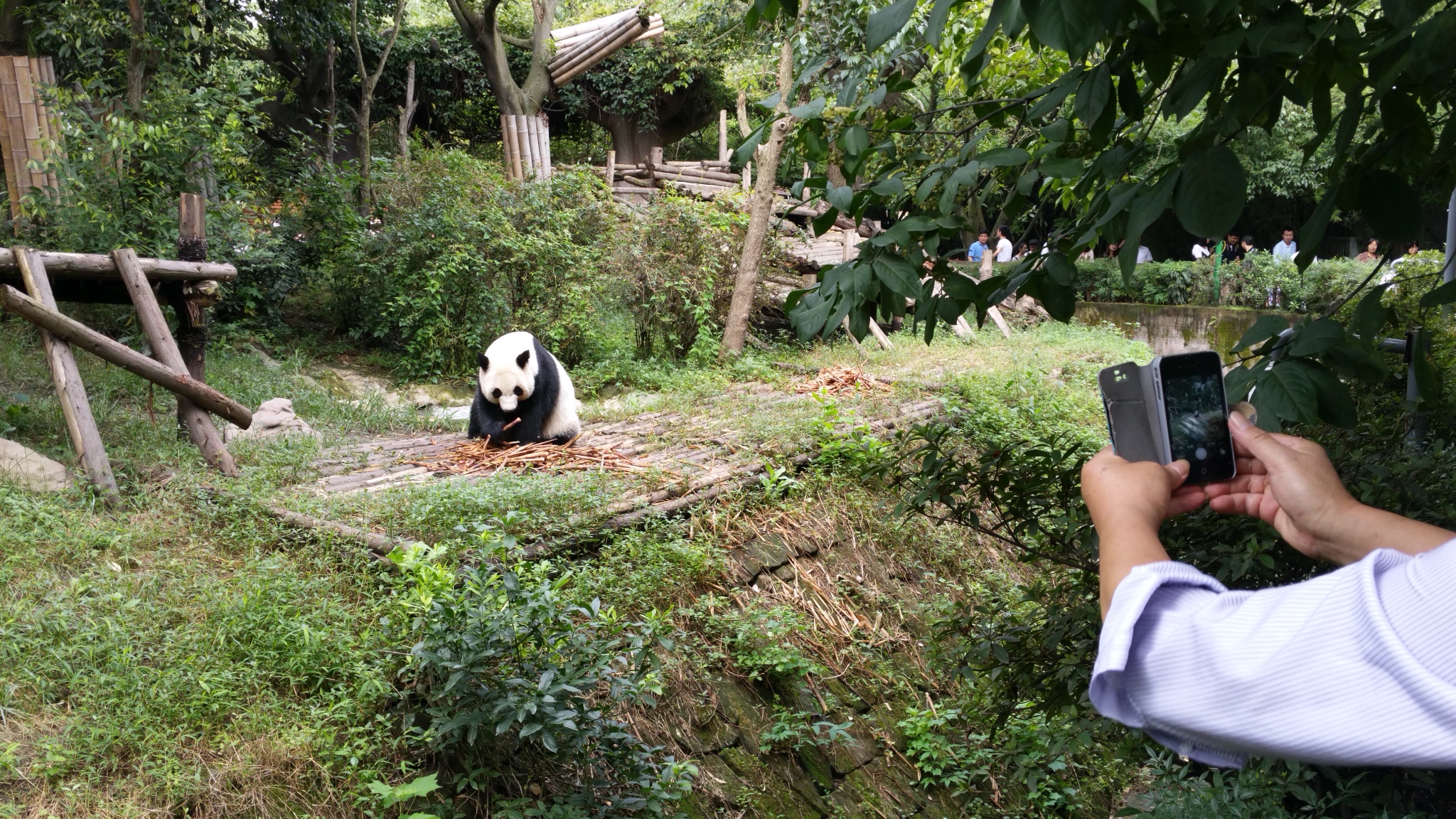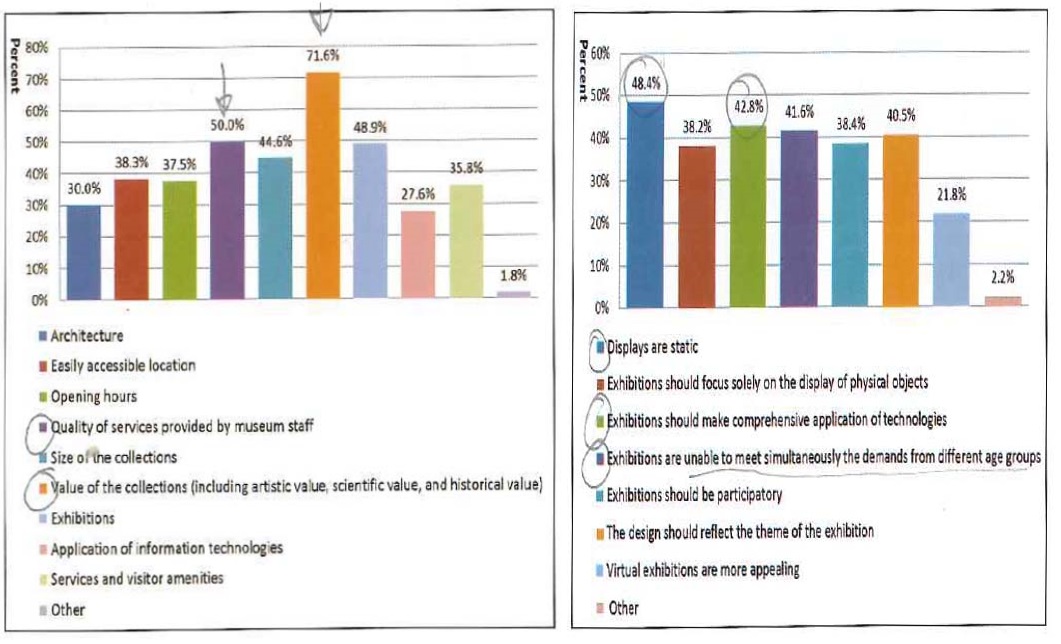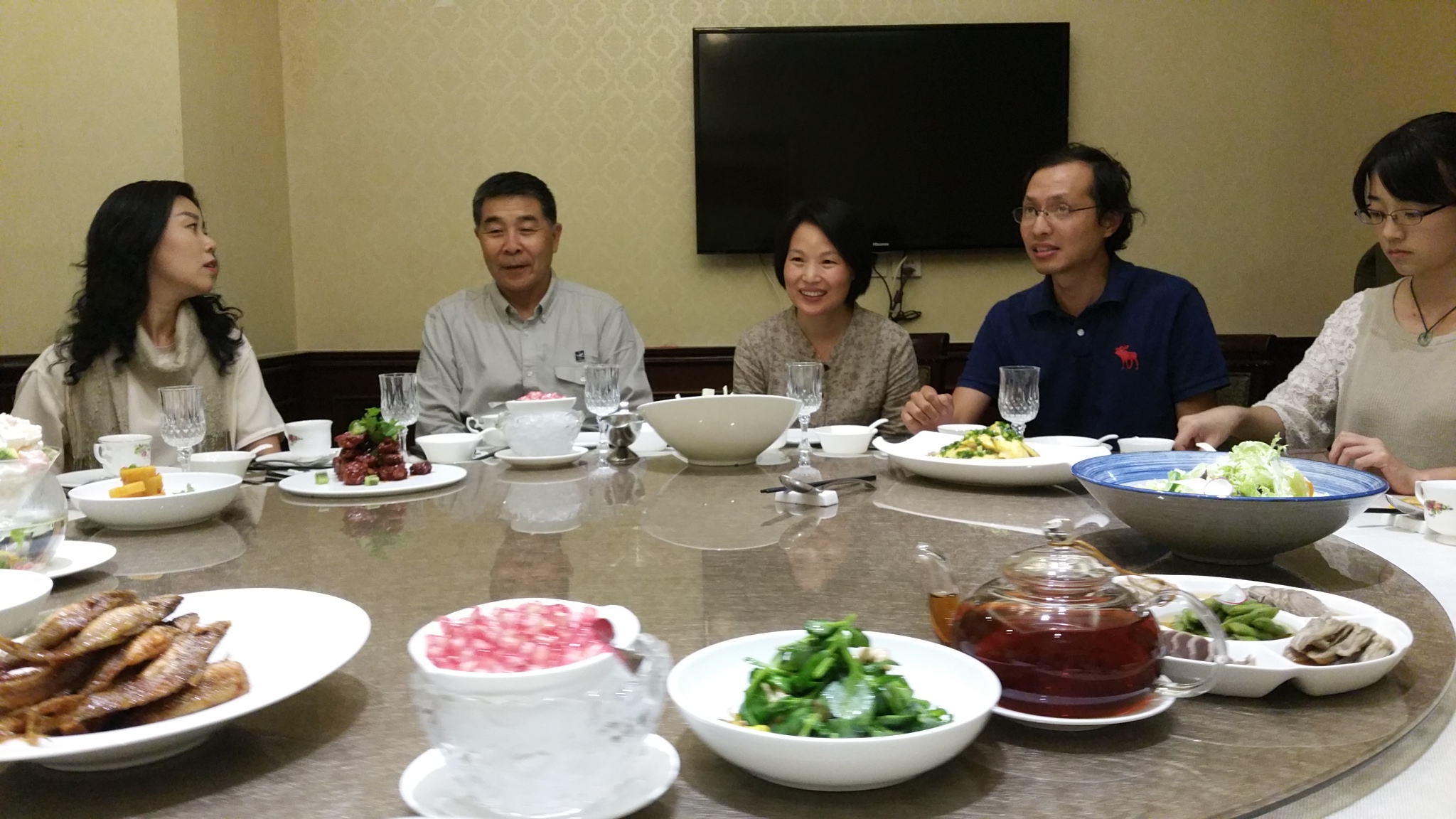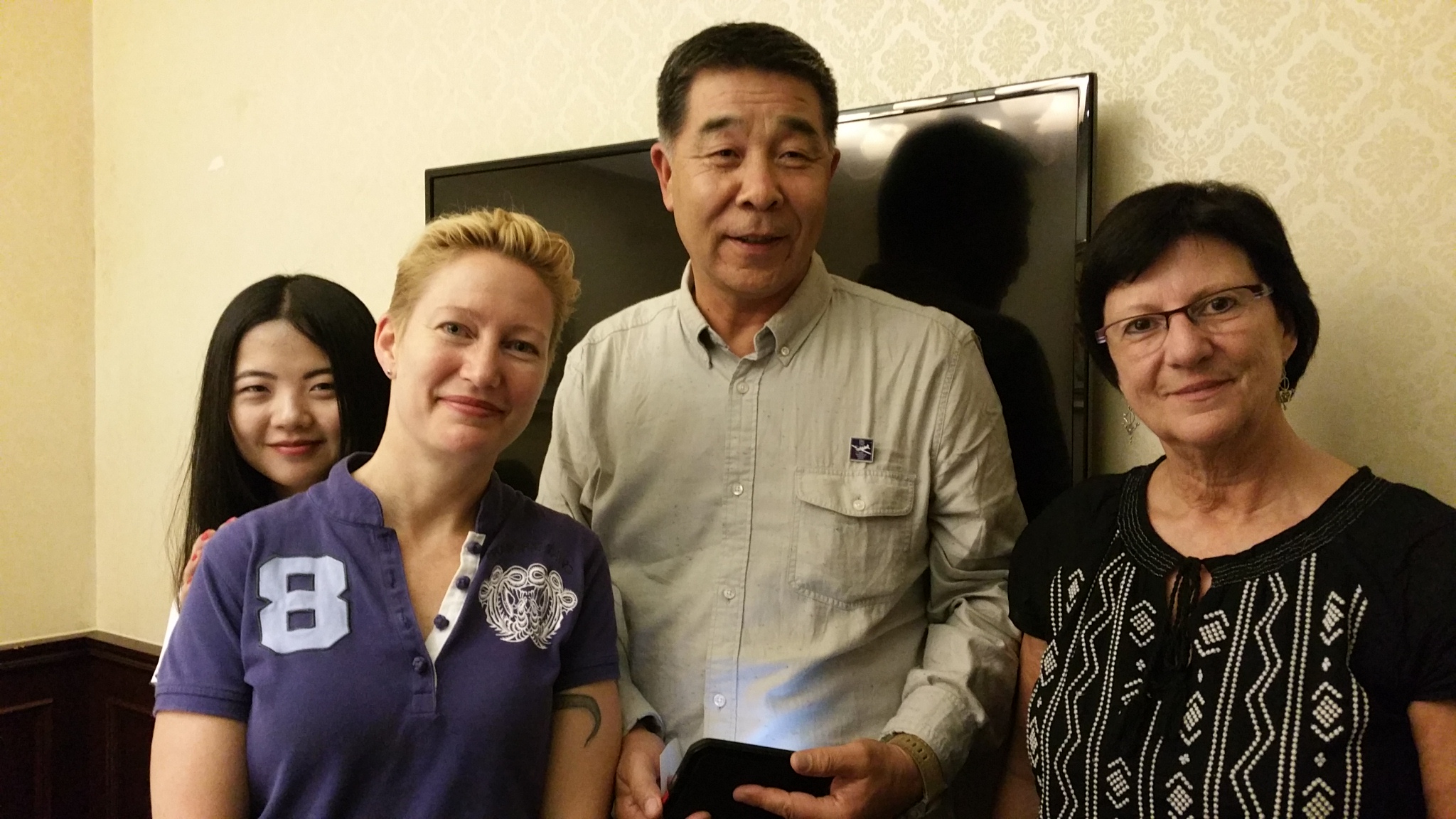Conxa Rodà
We talked in a previous post of the tour that the Museu Nacional was invited to do by Museums and the Web to three Chinese cities and we commented on the characteristics and challenges of the museums there. Today we’ll share content extracted from the lectures and show the museums we visited.
Talks and sessions
Of the talks I would like to highlight:
- The presentation of the new project of the Shanghai University Museum. They have been working on the architectural and museological project since 2008, and it is foreseen to open to the public in 2018. Its director, professor Lu Ming, and the assistant director, professor Guo Ji explained the major lines of the new museum.
Its main goal is to show the Shanghai Style Culture, the culture of innovation that distinguishes the city. Under the principle that in museums content and format should be aligned, its pillars are:
- the technology, with the aim of having a strong digital dimension. The museum is working of three main projects: the digitization of the collection, with many works in 3D and the users can add descriptions to the work; an intense presence on social media; and the publishing of the magazine Museums and New Tech
- globalisation effort, as a platform of international exchange of students with other universities. In line with this, they have signed agreements with the University of Japan, and recently with Museums and the Web.
- talent development, which is the foundation of its mission.
In terms of public, the museum is oriented towards three major segments: the local public of Shanghai; the public of the whole of China, given that the University of Shanghai receives students from all over the country; and cultural tourism.
As we frequently heard in many interventions and meetings with other museums, they will be very open to collaborations with other museums.
- The talk by the Deputy Director at Shanghai Museum Information Centre in which Mr. Liu Jian, spoke of the need for the transformation of museums to be more innovative and inclusive and to boost social progress. To achieve this, Internet is key. Mr. Liu insisted on the need for cooperation and a change in the way that the museums work. He also explained the need of opening up access to research which is carried out within the museum. The public has access to the works exhibited but not to the research and it is necessary to break down these barriers. In terms of the future of museums, it is considered that they should be aligned in three directions: with the global strategy of the centre, with the expectations of the community, and with the technological advances.
- The presentation of the research led by the Wuhan University for the establishment of a model of common indicators to evaluate museums’ performance. 11 major provincial museums, funded by the central government’s financial aid participated in the pilot project. Professor Fu Caiwu President of the National Institute of Cultural Development of the Wuhan University, explained that the western standards are of no use for them, above all due to the differences in the systems of funding and management.
Commissioned by the National Heritage Board and the Ministry of Finance, the research team spent one-year in collecting data for the 11 museums: Shanghai Museum, Nanjing Museum, Hunan Provincial Museum, Henan Museum, Shanxi History Museum, Hubei Provincial Museum, Zhejiang Museum, Liaoning Provincial Museum, Chongqing China Three Gorges Museum, Capital Museum, and Shanxi Museum. The project has stablished:
- Indicators: two sets of evaluation system have been defined, “The Museum Comprehensive Performance Evaluation System” and “The Performance Evaluation System for the Special Funds by the Central Government”. Those of global evaluation are differentiated between “inputs” and “outputs”. The inputs include three level-one indicators -financial, equipament and human resources. The outputs include seven level-one indicators, 58 level-two indicators and 33 level-three indicators. The 7 of level-one are:
– protection of collections
– displays and exhibitions
– academic research
– professional training
– exchanges and cooperation
– social education
– social influences
- Evaluation model: due to the differences of scale and development priorities among museums, an evaluation using just one-year data might be biased. To solve this problem, the performance evaluation model calculates the average from 2009 to 2014 with appropriate weighting
- Weight setting: defined by 39 experts from local cultural relics bureau, provincial and municipal museums and universities.
- Comprehensive performance ranking: the results are reported to the National Heritage Board and the Chinese Ministry of Finance, and they are one of the important criteria for the central government’s funding to the 11 museums for next year.
This whole complex system of evaluation is designed to be applied to measure the performance of the state museums, of which there are a total of 1,822 centres.
It’s impossible to review here the numerous museums presented during the intense day of the Wuhan University, among them the Wuhan Museum, the Panlong City Ruins Museum, the 1911 Revolution Museum, the Wuhan Revolution Museum, The Museum of Wuhan Uprising of 1911, the Hankow Customs House Museum. We are very grateful to their directors, curators and educators for having shared their interesting projects.
Among the experiences presented by the “western delegation”, apart from the social app Unique Visitors that we, the Museu Nacional, presented and was commented on in the previous post, it is worth highlighting:
- TourML, presented by Rob Stein, executive director of the AAM (American Alliance of Museums), in conversation with Nancy Proctor, co-director of Museums and the Web. Developed by the IMA (Indianapolis Museum of Art), TourML is a specification for building, sharing, and preserving mobile tours that can be used by museums of all types and sizes to create and deploy mobile experiences. This project is meant to deliver mobile standards and open-source tools for the benefit of the entire cultural technology community. Faced with the convenience, or better said, the need to produce content suitable for any device and platform visitors use, Nancy Proctor states that what we need is to invest as much as we can in content and user experience and not in technology, that’s going to change very fast.
- “Be Here Baltimore”, a collaborative storytelling project promoted by the Baltimore Museum with the support of izi.Travel platform. Nancy Proctor explained that in just two months they collected more than 250 stories narrated by their inhabitants, included in an app that allows others to know the living stories of the city.
https://izi.travel/en/bdda-a-grandmother-s-pilgrimage-baltimore/en#be56-inner-harbor/en
As Nancy Proctor says, the museum is a distributed network and distributed mobile storytelling changes everything. Mobile is the dominant platform of content and communication today and that’s why there is a transition “from Headphones to Microphones”, that is from museums talking and people listening into giving the audience the voice. “Be Here Baltimore” is an excellent example of this.
- accessibility project of the MCA, Museum of Contemporary Art of Chicago. Within their three-year accessibility plan, the museum developed a collaborative project, to elaborate visual descriptions on the website of the works of the collection. Initially thought for people with visual impairmnent, the descriptions have turned out to be useful for all the audiences, making contemporary art more accessible to non-experts.
“The best platform is people” said Susan Chun, Chief Content Officer of the MCA. Thus, the writing of the descriptions of the 2,000 works of the collection has been done by an internal team of volunteers – conservators, and educators and other professionals, and was also opened up to the participation of the public through the web. For the descriptions, they used the Coyote open source software.
Visits and meetings in museums
Shangai Museum
Shanghai Museum. With a square base and an upper round sphere, the building symbolizes the Chinese philosophy that the earth is square and the sky is round.
Finished in 1996, the collection counts on more than a million pieces, of which 140,000 are digitised. 400 people work there, of which 20 are dedicated to digital. It receives an average of 3,700 visitors per day.
The collection is diverse, counting on a collection of sculptures, ceramics, jade, calligraphy, textiles and masks from multiple ethnic minorities. What interested me most was the furniture from the Ming and Qing Dynasties and the magnificent collection of 400 bronzes of more than 3,000 years of antiquity

One of the jewels of the collection. Ox-shaped wine vessel, early 6th century BC. Shanghai Museum. Photo: Conxa Rodà
The Shanghai Museum has an active digital department and we had the opportunity of meeting its director, Mr. Liu Jian. In collaboration with a cutting edge technological company, Wonders group, they have set in motion two splendid digital initiatives:
- a good multimedia audio-guide with a touch screen that lets you see objects in 3D with a simple rotation of the finger and without additional clicks.
- a dashboard, which presents in a very visual way a series of aggregated data about the objects of the collection, about the influx of visitors, about the conditions of temperature and humidity of the galleries, etc. So far it is only accessible internally, but in the future they don’t rule out sharing it on internet.
Dashboard screens of the Shanghai Museum, presented by Mr. Liu Jian , Deputy Director of the Information Centre.
The dashboard –as was explained by Luo Yier, Creative Director of the Wonders group- presents and controls:
- a Data Model Framework
- the Audience Consumption Behaviour
- the Building control and data (temperature, humidity, etc)
For the international visitors, often highly ignorant about the history of the country, it would be convenient to offer a wider context. Having the signage in English is appreciated, but only one fact and the name of an emperor or dynasty doesn’t provide enough context. It should be said, however, that the same is true in our museums. If we think about the visitors from other cultures, we have a lot to improve –in the explanations about the Romanesque or the Gothic Art in our own museum, for example. The globalisation of tourism means that we have to think about enriching the context and providing hints or clues for the interpretation.
Hubei Provincial Museum
Built in 1953, the Hubei Provincial Museum is the largest professional institute with the strongest technical force in Southern China. It is an institution of cultural relics collection, exhibition and promotion as well as an important research centre of archaeological exploration, discovery and relic protection in the Hubei province. It hosts a collection of more than 230,000 cultural relics, which are mainly of three series: the prehistoric, the bronze ware and the Ming-dynasty series.
With high towers, multilayer wide eaves and roof slopes, the whole complex represents the style of Chu architecture.
With education as a priority and the will to offer online access to the collection for the non-visiting public, it counts on a large team of volunteers. In 2010 the Hubei Musuem was awarded the title of “Model Volunteer Base”.
With education as a priority and the will to offer online access to the collection for the non-visiting public, it counts on a large team of volunteers. In 2010 the Hubei Musuem was awarded the title of “Model Volunteer Base”.
New Chengdu Museum
Our stay in Chengdu coincided with the inauguration of the new museum.
The largest urban museum in southwestern China holds more than 200,000 cultural relics, including bronze wares, gold and silver objects, portrait bricks, carvings, sculptures, ceramics and calligraphy and painting works.
Sanxingdu Museum
Located in Sichuan region, it opened to the public in 1997. Integrating the collection, preservation, academic research and social education, the museum showcases precious cultural relics unearthed at Sanxingdui archaeological site. Sanxingdui was the capital of Shu state about over 3,000 years ago, which is one of the largest and well-preserved known cities of the time in China. The site had become the cultural centre of the Bronze Civilization in Sichuan Basin since around 1800 B.C.
The most singular and spectacular thing about the museum is the collection of bronze sculptures of more than 3,500 years of antiquity. Some of the masks are more than 1.4 metres high.
Another singularity is the whole green environment of the museum. Of all the land occupied by the facilities, 80% is green space with gardened areas, a lake, a bamboo plantation, etc. It obtained the Green Globe 21 certificate, Ecotourism standard.
Considered to be one of the 10 best exhibitis in the whole of China, it’s the first museum to be awarded an ISO certificate (ISO9001:2000). The team of educators and monitors gathers together more than forty youths. The average age is twenty four and a half years old. It won the honourable title of “National Model of Young Team” in 2005.
Bronze sculptures, 1,800 BC and audio-guide information with an image of the mask of gold on bronze. Photos: Conxa Rodà
As in many museums of the country, the aspect related to interpretation and education is very well performed. The museography and labelling in the galleries – bilingual in Chinese and English, provide a good context, particularly for the local public.
Some of these relics have been exhibited in over ten countries and regions such as Britain, Germany, France, the United States, Canada, Hong Kong, Taiwan, Japan, and Australia.
Panda Park, Chengdu
Center dedicated to scientific research and diffusion, its full name is Chengdu Research Base of Giant Panda Breeding, founded in 1987. Chengdu has been the ancestral homeland to giant pandas since ancient times. Fossil records indicate pandas inhabited this area as recently as 4000 years ago.
The main purpose of the park is to study, breed and rear giant pandas to better preserve this species. At present, the Research Centre consists of a feeding room, sleeping quarters, a training centre, a medical station, a laboratory building and a giant panda memorial hall. The complex is comprehensive for the needs of panda husbandry and provides large tracts of land for the pandas, including swaths of verdant bamboo.
Survey results on the Perception of Museums in China
To finish this chronicle, I would like to comment on some of the aspects about the Chinese visitors and staff expectations and interests, included in the study published in 2016 by the ICOM and presented in the Exhibition of Chengdu: Survey of museums in the Asia-Pacific region: visitor and staff expectations and perceptions:
- the main elements considered to evaluate a museum (chart 1)
Out of 10, the first is the value of the collection, not surprisingly, given that this is the raison d’être of a museum and the main reason for the visit. The second most valued aspect is the quality of services provided by museums. And the third are exhibitions. - about the evaluation of exhibitions (chart 2), the top three identified are: displays are static, exhibitions should use a more comprehensive application of technology and exhibitions are unable to meet simultaneously the demands from different age groups.
- qualities that future museums should have: 75% point out to offer more educational programmes and activities. Many consider that they should maintain their non-profit status and also serve people from all social backgrounds. While the social and educational function is highly considered, few expect market-oriented museum management or entertainment focused.
Acknowledgements
I wouldn’t want to finish this chronicle without expressing my gratitude once again to the Chinese Museums Association, Museums and the Web, the Shanghai University Museum, Wonders group and Wuhan University for the organisation, the warm welcome, and the extreme hospitality during all the meetings and sessions.
Welcome dinner with the directors of the Wonders group, the Chinese Museums Association (CMA) and of the Shanghai University Museum. On the right, with QingQing, logistical soul of the expedition, Nancy Proctor and the President of the CMA.
And I would like to express my thanks to Hiroko Husano, from Museums and the Web and to Susan Chun, from the Museum of Contemporary Art of Chicago, for being magnificent travel companions, along with the already mentioned QingQing and Nancy Proctor.
The western and eastern museums have a lot to learn from each other. The clearly notable openness and interest in collaborating in these meetings will surely bear fruit in the future.
Recommended links
China, Not Silicon Valley, Is Cutting Edge in Mobile Tech, The New York Times, 2016
The future of museums in China, The Guardian, 2014
Museos gratuitos en China, toda una realidad, United Explanations, 2013
Mesa redonda: ‘Gestión y protección del patrimonio, museos y turismo cultural: experiencias España-China’, Fundación Consejo españa-China, 2015
China “can’t buy culture” with museum boom, say critics, de zeen, 2015
China’s aggressive museum growth brings architectural wonders, CNN, 2014.
Nuevo museo en Chengdu celebra su apertura con exposición de emperador chino Qianlong, vídeo, 1’55 min.
Co-directora del Curs d'Estratègia Digital_UOC_Museu Nacional d'Art de Catalunya
Co-directora del congrés CIMED de Museos y Estrategias Digitales

